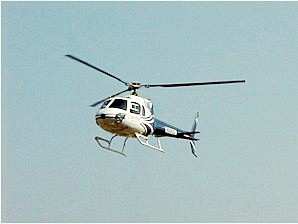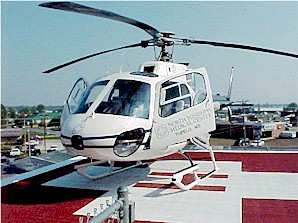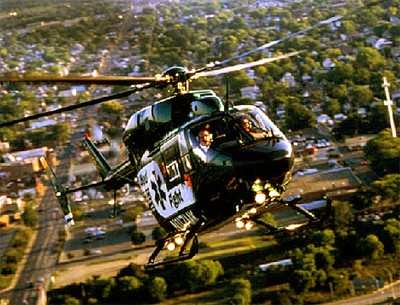National Newspaper Slams Industry
Armed with its own database on air ambulance mishaps and spurred
by safety "experts" who say "someone needs to be uncomfortable,"
USA Today Monday published an extensive report on the safety of
medical helicopter flights. The report, which ran across three
pages of the national publication, suggests none of the safety
improvements made in the airline industry have made it into the
highly-lucrative air ambulance business.

The cover story reported that, since 2000, more than ten percent
of the entire air ambulance fleet in the US has crashed, killing 60
people in 84 total mishaps. Despite that, the Gannett publication
reported, the FAA has "failed time and again to take steps that
might have averted tragedy and saved lives."
The article cited conflicting studies on reasons for the high
rate of mishaps involving air ambulances. But "One possible
explanation for the alleged overuse [of medical helicopters]:
profit," the paper reported. "Air ambulance firms receive roughly
$7,500 per flight from insurance companies or Medicare."
The authors went on to point out that other studies indicate
medical flights are saving lives. Recent changes in medical
practices -- including the deterioration of rural health care and
the rise of regional trauma centers -- has led to the rapid
increase in the pace of medical flights. And, alleges the paper, in
the number of medical flight accidents.

The core of the story suggests that the FAA has failed to
properly oversee the air ambulance industry. That failure to act,
said former air ambluance company flight director Vernon Albert, is
"almost criminal. Someone needs to be uncomfortable -- and not the
guy riding in the back of the helicopter.
To some degree, air ambulance advocates agree. In 2000, an air
ambulance industry trade group called on the FAA to mandate Crew
Resoruce Management programs where pilots listen to their coworkers
and monitor themselves, looking for signs of stress or fatigue.
It's a program that has demonstrably worked within the airline
industry. Accordingly, in July of that year, an industry committee
forwarded to the FAA its suggestion for language that would create
and maintain such a safety program.
"We dont' know what happened after that," said J. Heffernan, who
led the committee's effort. The proposal was lost somehwere in the
depths of Jane Garvey's FAA administration, the paper reported.

FAA inspectors also came under close scrutiny in the USA Today
article. "FAA inspectors have been unable to keep up with the
dramatic growth in the air ambulance industry," the paper reported.
The NTSB, after investigating three air ambulance accidents last
year, found FAA inspectors never went to the companies
involved.
Jeff Guzetti manages NTSB investigations into accidents
involving air ambulances.
"The safety board investigators are interested in the adequacy
of FAA oversight of air ambullance companies, especially ones which
conduct operations all over the country, but have one FAA office
responsible for oversight," he told USA Today. While the number of
air ambulance companies continues to grow at a remarkable rate, the
number of FAA inspectors continues to fall.

Even the FAA admits its having trouble completing the number of
inspections it would take to make a difference in air ambulance
safety. A draft report by an agency task force investigating
medical helo crashes sdaid the inspection effort is, in essence, a
"hit or miss proposition."
Requests for more inspectors by the FAA were turned down by the
Bush administration, according to the newspaper report.
 ANN FAQ: How Do I Become A News Spy?
ANN FAQ: How Do I Become A News Spy? Classic Aero-TV: The PB4Y-2 Privateer - A Priceless Aero-Treasure
Classic Aero-TV: The PB4Y-2 Privateer - A Priceless Aero-Treasure Aero-News: Quote of the Day (07.14.25)
Aero-News: Quote of the Day (07.14.25) ANN's Daily Aero-Term (07.14.25): Temporary Flight Restriction (TFR)
ANN's Daily Aero-Term (07.14.25): Temporary Flight Restriction (TFR) ANN's Daily Aero-Linx (07.14.25)
ANN's Daily Aero-Linx (07.14.25)






